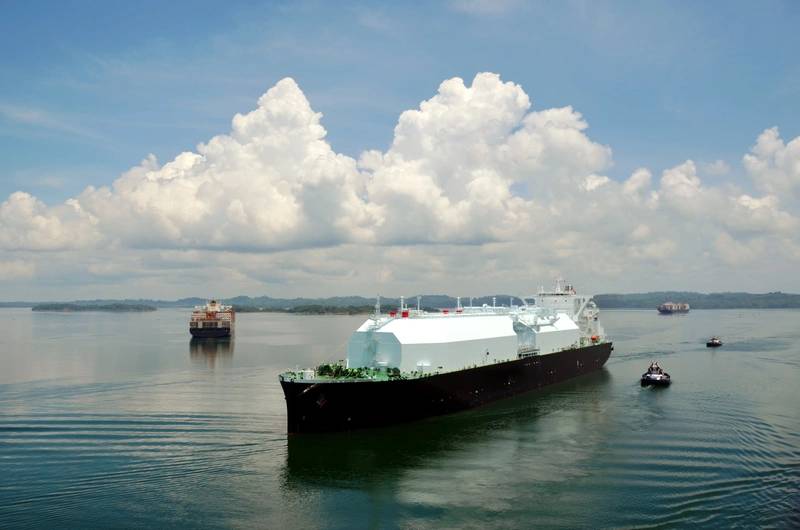US LNG Exports Through Panama Canal Shrink, Asia-Europe Spreads Widen
The number of U.S. liquefied natural gas (LNG) vessels transiting the Panama Canal to Asia halved in November compared with a year ago as Asia prices for the gas this week traded at their steepest premium to European prices in nearly two years.
A severe drought has cut vessel traffic through the canal, increasing costs for shippers that take alternative routes or pay extra fees for auctioned slots in Panama. Further restrictions on canal transits likely will put more cargoes on lengthier routes, analysts said.

The spread between the Japan Korea Market (JKM), a widely used Asian LNG benchmark, and the Title Transfer Facility (TTF), the European gas benchmark, was assessed by S&P at $2.79 per million British thermal units (mmBtu) on Dec. 6, its widest since Dec. 31, 2021.
Since Dec. 1, only 22 ships are allowed to pass the waterway each day. LNG and dry bulk shipments have been the most affected by transit limits, the canal's authority said last month. It did not reply for a request for further comment.
In November, of the 22 U.S. LNG cargoes exported to Asia just six crossed the Panama Canal, nine took a route through the Suez Canal, and seven took the longest route by bordering South Africa, according to the LSEG data.
In the same month last year, of the 20 U.S. LNG cargoes that went to Asian destinations, 12 used Panama, six passed Suez and two bordered Africa.
Asian LNG demand has been tepid since early November due to adequate inventories, weak industrial demand and generally mild weather.
"We still see Asia-Pacific balances quite comfortable this winter and expect only a minimal Asian call on U.S. spot LNG, but the Panama congestion makes this marginal call a bit more expensive than normal," said Jake Horslen, senior LNG analyst at consultancy Energy Aspects.
But vessels taking alternate routes could gains in coming months, said Jason Feer, head of business intelligence at shipping consultancy Poten & Partners.
"The reality is that it is too long and expensive to go through the Panama Canal at the moment, even though the forward curve has Asia as the best market for LNG," Feer told Reuters.
The JKM/NWE - another spread that is commonly used in the market between Asia and Northwest Europe - reached $3.385/mmBtu on Dec. 6, according to S&P.
"It is only just at the cusp of being profitable to ship cargoes from the United States around Cape/Suez to Northeast Asia," S&P said.
Cheniere Energy Inc LNG.A, the largest U.S. LNG exporter, this year exported 19% of its cargoes to Asia, a spokesperson said. It has been using alternative routes to deliver some cargoes, the person added.
"We will continue to work with the canal to utilize it when feasible and use alternative routes as needed to deliver LNG safely and reliably", the spokesperson said.
Freeport LNG, the second largest U.S. LNG producer, declined to comment. Cargoes departing its terminals have been mainly using the Suez Canal since October to reach Asia, LSEG vessel tracking data showed.
"We prefer the certainty of the Suez Canal because even if it is going to take an additional 10 days, we know for sure it will get through at the appointed time. But with the Panama Canal, there is no certainty," said a person with knowledge of Freeport's operations.
(Reuters - Reporting by Emily Chow and Marwa Rashad; Editing by Nick Zieminski, Emelia Sithole-Matarise and Daniel Wallis)
